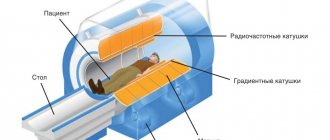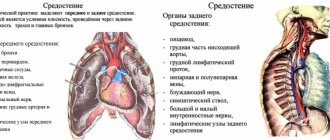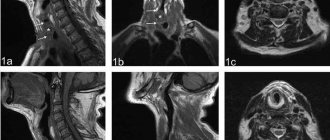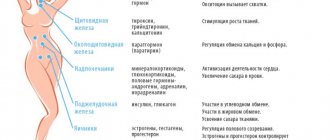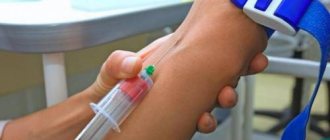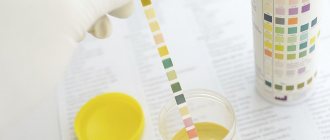The RVI indicator (stands for Relative Vigor Index and is translated from English as “vigor index”) is an effective and popular technical tool created by the famous trader John Eilers. The world first learned about the indicator in January 2002 thanks to a publication in the magazine Stocks and Commodities.
The principle of operation is based on the same idea as the functioning of other oscillators: the closing price is most often located above the opening price if the trend is upward and below the opening price if the trend is downward. The indicator is trend-based, so the main task of a trader when working with it is to follow the current trend. On the other hand, line crossing entries can include it in the class of oscillators.
Calculated using the formula:
RVI = (close-open) : (high-low)
The indicator compares the closing level of a period with the opening level and demonstrates the actual change in value for the period, which is normalized to the maximum range of a given period (this can be an hour, a day). The resulting value is smoothed over a specific set of moving average periods. The second line is a weighted moving average with a period of 4.
The tool is included in the standard set of the MetaTrader4/5 trading terminal, so there is no need to download it additionally.
Details about the blood test for RW
Many historical chronicles from the 15th–15th centuries tell about syphilis diseases. Its widespread distribution in those days caused a huge number of deaths - according to some sources, there were up to 5 million. And not only in Asia, but also in Europe, there was a widespread extinction of inhabitants due to infection with syphilis. At that time, the microorganism that causes the disease, the Treponema pallidum bacterium, could not be diagnosed or destroyed, so the pathology was considered fatal.
The history of the creation of a blood test for RW began at the beginning of the last century. The technique for carrying out this diagnosis was developed by the German microbiologist August von Wasserman in 1906, but, for example, in Russia it became mandatory for many categories of people only in 1928. The study was named after its creator, and the decoding of the abbreviation RW (РВ) sounds like “Wassermann reaction”.
This diagnosis is a serological analysis that can not only detect the presence of a microorganism in the human body, but also establish the timing when it appeared and gave impetus to the onset of the disease. The principle of conducting such studies is to search for antibodies (immunoglobulins) formed to Treponema pallidum, which is the main laboratory sign of pathology.
Reference! Such bindings occur when blood serum is applied to a laboratory substrate containing antigens of the pathogen, and in the presence of antibodies in the body, complexes are formed, which are determined during diagnosis. Such bundles are called “antigen-antibody”.
What is the Wasserman reaction
All patients without exception who need inpatient care donate blood for rw. This test is popularly called a syphilis test. The fact is that this disease is very dangerous and can be completely asymptomatic for a long time. Anyone can become infected with syphilis. This disease can be transmitted both sexually and by contact. That is, in principle, you can catch syphilis even in a minibus by holding an infected handrail.
Today, syphilis is highly treatable, but the effectiveness of treatment depends on early diagnosis. It is for this reason that all patients who need to go to the hospital for any reason need to take this test. If there is an infection in the human body, the Wasserman reaction will be positive.
Depending on the stage of the disease, a positive result can be expressed in one or more + signs. In this case, the blood is examined not for the presence of the virus itself, but for the presence of antibodies in the body that fight the disease. The more antibodies in the blood, the more benefits the result will have. The largest possible number of crosses is four.
The course of syphilis and the possibility of RV at different stages of the disease
Syphilis is considered a classic venereal disease. The main route of transmission of the pathogen is sexual contact. Infection through the blood and in utero from a sick mother of the fetus cannot be ruled out either. Treponema pallidum cannot survive for long in dry places, which significantly reduces the likelihood of transmission of the pathogen through household means.
But this variant of infection cannot be completely ruled out, since it can remain in wet, for example, body secretions (saliva, mucus, etc.) for a very long time. In the process of development of syphilis, three periods are distinguished - primary, secondary and tertiary. Each is characterized by a certain time frame, symptoms, as well as the probability with which the RV analysis shows the presence of the pathogen.
Primary period
At this stage of development, which lasts 5–6 weeks after the pathogen enters the body, an ulcer characteristic only of syphilis appears, which is called chancre. It forms in places of infection - the genitals, mucous membranes of the rectum or mouth. A little later, an enlargement of nearby lymph nodes occurs - most often in the groin, if the disease is localized in the genitals, and submandibular, if in the oral cavity.
The chancre disappears on its own, without treatment, approximately 3–6 weeks after formation. At the primary stage of the disease, it is difficult to determine the presence of the pathogen in a plasma sample, and an RV analysis taken during this period may be false negative. If there are primary symptoms characteristic of syphilis, this examination should be repeated after 10–14 days. It may be possible to confirm the disease.
Secondary period
Manifestations of secondary syphilis occur approximately 4–10 weeks after the formation of chancre. They appear as pale rashes all over the body, general malaise, headache and increased body temperature. The symptoms are very similar to the flu, but the lymph nodes are swollen. Later the signs disappear and then appear, from time to time. At this stage of the disease, in the vast majority of cases, antibodies to Treponema pallidum are detected and the diagnosis is easy to establish.
The rash of syphilis even spreads to the palms and soles
Tertiary period
This stage of the development of the disease is accompanied by damage to the nervous skeletal system, as well as most internal organs. Such changes are typical when the disease lasts for many years if proper treatment is not applied. And even at this stage, syphilis may not be detected if you take blood for RW during the period of remission.
From everything described, it becomes clear that such patients may not have any signs of the disease for a long time, and even the incubation period may be prolonged. This is due to the state and quality of functioning of the immune system. In some cases, upon contact with the pathogen, syphilis does not develop, but the person becomes an asymptomatic carrier of the infection.
Then a blood test for RV becomes almost the only method that allows one to detect the presence of a dangerous microorganism, as well as determine how long it remains in the human body. But sometimes, to obtain a complete serological picture, additional, more specific diagnostic procedures are performed.
False positive reaction
In 5% of patients, a false positive reaction is observed - a condition when the analysis shows ++, but the patient is not sick. The reasons for a false positive manifestation are:
- tuberculosis, systemic lupus erythematosus, leukemia, leprosy, leptospirosis, cancer, typhus, scarlet fever, HIV and AIDS;
- beriberi and sleeping sickness, hepatitis;
- in pregnant women or those who have just given birth;
- during menstruation;
- after anesthesia, consumption of alcohol, drugs, fatty foods, coffee, cigarettes, medications, administration of certain serums or vaccination;
- acute infections in pregnant women.
Basic characteristics of HIV and AIDS
No less dangerous and difficult to define, and maybe even more so, is the so-called “plague of the 20th century” - AIDS. Therefore, tests for RV and HIV (human immunodeficiency virus) are almost always prescribed in parallel and are an integral part of many comprehensive and screening studies.
HIV
Modern medicine distinguishes two types of this virus – HIV-1 and HIV-2. Infection with the pathogen occurs most often through sexual contact and parenterally (blood route), as well as from a sick mother during childbirth or breastfeeding. The first signs of infection in the body usually appear after several weeks, such as:
MCV in the blood - what is it?
- temperature increase;
- general weakness, malaise;
- rash on the skin;
- diarrhea, loss of appetite;
- enlarged lymph nodes.
After several weeks, the first signs often disappear and the disease goes silent, which gives people reason to mistakenly think about a cure for a temporary illness. But the effects of the virus continue - the immune system is gradually being destroyed, and this means that the body is deprived of protection against infections.
As a result, the patient becomes susceptible even to pathogens that pose absolutely no threat to healthy people. The latent period can last quite a long time - up to 8-10 years, and it is possible to understand that there is a disease only if you donate blood. Most HIV-infected people have no idea about their infection. AIDS develops much later in such patients.
AIDS
In the final stages, HIV develops into AIDS – acquired immunodeficiency syndrome. By this time, the body is almost completely deprived of its protective capabilities, and the simplest disease in an AIDS patient can lead to serious problems and even death. The transition from HIV to AIDS occurs with a significant decrease in CD-4 lymphocytes in the blood. At this stage, oncological and infectious processes develop, which are ultimately incurable, which leads to death.
Setting up the RVI indicator
The only key parameter here is Period , which defaults to 10 . This period is selected empirically for each currency pair and timeframe separately, simply by brute force. You must ensure that the indicator highs coincide with the price highs on the chart. Start with 10 and see what happens. It is very likely that the result will be quite satisfactory and you will not want to change anything.
Approximately like this as shown in the screenshot. The extrema of the indicator coincide with the extrema on the chart. USDCAD chart , the RVI Period here is 5 .
In the Levels , you can add some levels that are significant to you to the indicator window, perhaps similar to the overbought-oversold levels of stochastics.
How to read the indicator and its signals
To receive a trading signal we need:
- The green line of the indicator was in the upper (for a bullish trend) or lower (for a bearish) area of the indicator window. The upper region is above zero, the lower region is below zero. Moreover , the closer to the extremes (the higher or lower), the better.
- Next you need to wait until the red line crosses the green one.
Please note that when the indicator lines intersect at the zero mark or very close to it, it is better to ignore such a signal.
That's all . I will add that:
- If the green line of the indicator is in the upper area, it has been crossed by the red line and now the red line is above the green - this is a signal of the end of the bullish trend and entry into sales.
- Well, and vice versa, if the green line is below and they intersect with the red line so that now the green line is above the red one - this is a buy signal.
As you can see, nothing complicated. Take a look at the chart and you will understand everything.
Cautions
Like absolutely any indicator, the Relative Vigor Index will sometimes give false signals. And like any indicator, it requires additional confirming signals . You can’t just take and enter the market based on a signal from just one indicator.
Therefore, for full-fledged and profitable trading, it is necessary to combine RVI with other indicators or technical analysis techniques.
For example, with Japanese pricing models . I'll show you an example of work now.
RVI strategy
We look at the screenshot and see the Hammer signal.
As we know, this is a signal of a bearish trend reversal. We look at the RVI indicator window and see that it also gives us a buy signal! This means that both signals indicate the same thing - it’s time to buy. The signals confirm each other. We enter into purchases, set a stop loss for the nearest local minimum (in this case, the tail of the Hammer candle), set a take profit at our discretion - either multiply the stop loss by 2 or 3, or set it at the nearest strong support-resistance level (read how to find them be sure to follow the link) and sit on your butt just waiting for profit. No magic, it's simple! I recommend that you subscribe to our newsletter - at the bottom of the post, then join the public VK to also keep abreast of all the news, including daily Forex analytics and surf the site,
When is it necessary to be tested for syphilis and HIV?
These procedures have long become mandatory in many situations, both during planned events and under certain prerequisites. So, donating blood for RV and HIV as a screening during medical examinations is required for persons working in the areas of service and interaction with people and food, as well as donors. Blood tests are regularly carried out on people suffering from drug addiction, providing sex services and having contact with infected people.
In addition, these procedures will be prescribed:
- women who are pregnant and apply for registration;
- persons visiting an outpatient medical facility for the first time;
- people with specific complaints about their health;
- patients before hospitalization or surgery;
- women preparing to become pregnant and undergoing routine examination.
Testing for RV and HIV is mandatory when planning pregnancy
Important! Thanks to regular scheduled examinations, it is possible to keep these two dangerous diseases under control, so you should never refuse to donate blood, especially since the procedures are not complex or painful.
What is syphilis
Syphilis is a systemic chronic venereal infectious disease that affects the mucous membranes, skin, bones, internal organs, and nervous system. Its causative agent is the bacterium Treponema pallidum. The main route of infection with syphilis is sexual. Most often, infection occurs during unprotected sexual intercourse. A predisposing factor for infection is the presence of microdamages of the mucous membranes and skin. In some cases, it is possible to become infected with syphilis through household means (through underwear or hygiene items of a sick person).
The complications of syphilis become more serious the longer a person suffers from this disease. In the primary period, the organs of the genitourinary system are mainly affected. In the secondary period, damage to the patient’s joints and bones is observed. The tertiary period of the disease is characterized by irreversible damage to internal organs and body systems.
Preparation and conduct of surveys
Before taking tests for the presence of Treponema pallidum and immunodeficiency virus, you should familiarize yourself with the basic rules of preparation. Find out from the medical staff where the blood is taken from, whether you need to donate biomaterial on an empty stomach or not, how much is done and how each specific analysis is deciphered. For the analysis to be valid, the subject must prepare for the upcoming blood draw.
Preparation includes abstaining from sexual intercourse, drinking alcohol, consuming fatty and salty foods, and abstaining from smoking for at least a few hours. The procedure is carried out on an empty stomach by collecting venous blood, optimally if this occurs in the morning, so that at least 8-10 hours have passed since the last meal - a light dinner. With proper preparation, the likelihood that the answers will show correct data increases significantly.
Patient actions before blood collection
You need to prepare for blood collection in advance. In order for the analysis to be most accurate and you do not have to deal with a false positive result, you need to follow several mandatory rules before donating blood for analysis. Your doctor should tell you how to take the test, but it happens that the patient simply does not know how to properly prepare for donating blood. In general, these rules apply to all situations when you need to donate blood.
- At least seven days before the test, you must avoid taking any medications. If this is not possible, be sure to tell your doctor.
- 24 hours before blood sampling, you need to exclude fatty and fried foods from your diet.
- On the day of collection, you need to give up coffee and strong tea.
- You should not take alcohol for 7 days, even as part of medications. Alcohol affects the analysis in such a way that you will probably get a positive result without following this rule.
- Blood must be donated on an empty stomach.
Following these simple rules will allow you to get an accurate blood test and not worry if you suddenly get a positive result out of nowhere.
Many people, out of ignorance or irresponsibility, neglect these standards, and they have to take a blood test for rw again.
However, a false positive result can be obtained for other reasons, including:
- Pregnancy. During this period, the woman undergoes active hormonal changes, which can affect the result of the analysis.
- Diabetes disease.
- Oncology. Malignant tumors have a negative effect on the composition of the blood, which can affect the analysis.
- Tuberculosis.
- Pneumonia.
- Viral hepatitis.
- Allergy in the period of exacerbation.
- Any infectious diseases.
- Recent vaccination.
How long will it take for the results to be ready?
One of the most interesting questions is, of course, how many days a blood test for RV or HIV is done, especially among patients with worrying symptoms. It all depends on the workload of the laboratory, as well as on the urgency of checking the required indicators. In public institutions, the patient will most likely have to wait as long as possible, while in private clinical laboratories the waiting time will be significantly reduced. In most cases, such analyzes are done within a period of 1 to 10 days.
Interpretation of the received materials
The interpretation of a blood test for RV may look like several options that determine a person’s current condition, that is, positive or negative. Moreover, each can have several variations, which are indicated by crosses on the form. For example, a positive result will look like four, two or one cross, which a specialist will decipher as:
- “++++” – positive reaction;
- “++” – weakly positive reaction;
- “+” is a dubious reaction.
If the answer form indicates one or two pluses, then the procedure must be repeated. This does not necessarily confirm the presence of the disease. Such distortion of indicators can be affected by the presence of serious allergens in the blood, infections, as well as pregnancy. If, upon re-examination, the value is again determined to be positive, then it is necessary to prescribe appropriate therapy.
Sample form for RV and HIV test results
The norm for such tests is a negative result, which means that antibodies to the pathogen are not detected, therefore, it is not in the body. We should not forget that all diseases, not excluding syphilis, are easier to cure in the initial stages. Therefore, RV testing is regularly prescribed to women throughout the entire gestation period.
After all, the consequences of intrauterine development of the fetus in a mother with syphilis are dangerous both for her life and for the child, who may be born with serious disorders or even die. A blood test for HIV is deciphered using approximately the same method, but much more complicated. When describing, a qualitative and quantitative analysis of materials is carried out and both have many subtleties and nuances.
Blood tests: expiration dates and readiness dates
A blood test for RW is a test to detect such a serious disease as syphilis.
It is better that syphilis is detected at an early stage, it is much easier to treat. Syphilis is a disease that often occurs in a latent form and is asymptomatic. Because syphilis is asymptomatic, an infected person may not be aware of his illness. This way he can infect other people.
The main route of entry of bacteria into the body is through sexual intercourse. Other variants of infection are also possible, for example, a person can also become infected through household means (through personal hygiene items, dishes or bed). Transmission of the disease from a sick mother to a child is possible.
This usually occurs in the first three years after a woman is infected. Therefore, every woman during pregnancy should take a blood test for RW.
The causative agent of syphilis is a pale spirochete. The development of the disease occurs gradually, in several stages:
- the first stage of the disease is the incubation period, its duration is from 20 to 40 days;
- during the second stage, called the primary period, chancre appears, after which the patient experiences a primary rash; the duration of this period is from 5 to 7 weeks;
- the secondary period or third stage of syphilis is characterized first by a primary generalized rash, and ultimately leads to the appearance of tertiary syphiloids (gum tubercles); the duration of this period can be from 3 to 4 years;
- the fourth stage (tertiary period) is characterized by severe symptoms (for example, softening of the bones).
Diagnostic value
RW analysis is the main indicator of the presence of the causative agent of syphilis in the body. The patient's serum contains specific paired complexes that are capable of attracting Treponema pallidum.
This disrupts the processes of hemolysis, the physiological destruction of red blood cells. RW allows you to determine the rate of hemolytic processes and the presence of infection in the body.
The Wasserman reaction allows doctors to:
- Make a final diagnosis when primary syphilis occurs;
- Establish the timing of probable infection (accuracy varies from 50 to 90%);
- Diagnose syphilis with latent course, neurosyphilis;
- Determine the presence of syphilis in people who have been in contact with the patient. This is necessary for the timely administration of preventive treatment;
- Assess the effectiveness of the treatment, remove cured patients from the register;
- Identify the visceral form of syphilis in the early stages;
- Assess the full picture of a criminal case (for forensic medical experts).
The need for analysis
A blood test for syphilis is necessary to determine the presence of the disease in the patient, the degree of its development in the body, and also to determine the effectiveness of the treatment. This diagnostic method is also used to determine the presence or absence of congenital syphilis.
If a person has primary syphilis, then the effectiveness of the analysis is 70–80%. With secondary syphilis, the probability of determining the patient's morbidity is 100%. The presence of syphilis in the body is detected 3-5 weeks after infection and no less than 7-10 days after the appearance of chancre.
The test is mandatory for food workers, medical workers, cosmetologists and hairdressers. Pregnant women are required to donate blood, at least 3 times during the entire period of pregnancy. In case of accidental unprotected sexual intercourse, you should also play it safe and donate blood.
If you suspect syphilis and have symptoms, you should also get tested. The symptoms of the disease are as follows:
- swollen lymph nodes, especially in the groin;
- ulcers and rashes on mucous membranes and skin;
- genital secretions.
How many days the blood test is done depends on the workload of the laboratory workers, but not less than 2 days. You need to take the test on an empty stomach. The day before the analysis, fatty and fried foods, as well as alcohol, are excluded from the diet.
The test result may be negative or positive. A positive result is indicated by a plus, of which there may be several. The number of advantages determines the degree of probability of the disease in the patient:
- + - doubtful reaction;
- ++ - weak positive reaction;
- +++ - clearly positive reaction;
- ++++ - a strong positive reaction.
If the decoding is one or two pluses, then the patient must retake the test, because It is not clear exactly whether the disease is present. A positive reaction occurs during pregnancy (in some cases) or in the presence of other pathologies and diseases.
Source: zdmedic.ru
Research procedure
The test for syphilis should be taken in the morning after an 8-12 hour fast or, in other words, on an empty stomach. It is necessary to prepare for the examination. The day before the test, you need to exclude juices, coffee, tea and alcohol from your diet. You should not eat fatty foods. You are allowed to drink only still water.
Where is blood taken from?
Blood is drawn from the ulnar vein. In newborn babies, blood is taken from the cranial or jugular vein. Sometimes cerebrospinal fluid is used for examination.
How long does a blood test for syphilis take?
The turnaround time for the analysis is usually no more than one day, it all depends on the speed of work of the laboratory staff.
Decoding
The Wasserman reaction may vary depending on the stage of the disease. There are three types of syphilis:
Source: https://xn—-7sbbabkwnixgwr4a5a.xn--p1ai/endoskopicheskoe-issledovanie/skolko-delaetsya-analiz-na-rw.html
How long are test results valid?
The shelf life of these tests is of great importance, which can ensure diagnosis in both children and adults. But in the case of methods that determine RV and HIV, there is no clear answer. For example, if a person is healthy and is simply undergoing a routine medical examination or preparing for hospitalization, then the answers will be valid for six months.
And in a situation where a person is sick and is under treatment or is suspected of having an incubation or remission period, the result will be valid for only 14 days, and the patient needs to retake it regularly. Therefore, when scheduling the next examination, you cannot refuse to carry it out - this provides the doctor with an understanding of the full picture of the patient’s condition.
Description of the RVI tool and its operation
To understand how the RVI indicator works, you need to study its detailed description. Technical analysis uses it to measure the confidence level of the current trend and identify the possibility of continuation of the current trend. In this case, it is assumed that the value reflects the equilibrium valuation of the assets of the total mass of market participants for a specific period of time.
Thus, the location of the closing price and the price range of the asset is compared. The result is presented in a smoothed form - a moving average is calculated for the obtained indicators, which determines the average equilibrium value for the period. Most often, a 4-period MA is chosen from the indicator value, which is a signal line and makes it possible to eliminate possible uncertainty.
Before using RVI, you need to understand its display. On the chart, the indicator is depicted in the format of a fast green line, which characterizes the energy of price movement and the balance of the crowd over a specified time period. A red line is also displayed - much slower, it is used to characterize the equilibrium of the crowd for a longer time interval.
The location and intersection of two lines gives certain signals. So, if the green one is higher than the red one, this indicates the predominance of buyers in the market, so it is worth buying. When the fast green signal is below the red one, this means that sellers dominate the market and it is advisable to trade only short positions.
RVI differs from many similar oscillators in that it does not display the oversold/overbought zone. Therefore, these zones need to be explored and taken into account using other tools.
